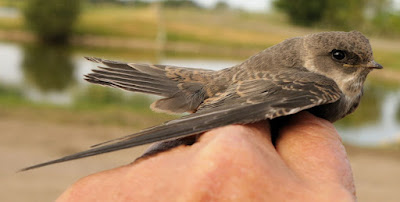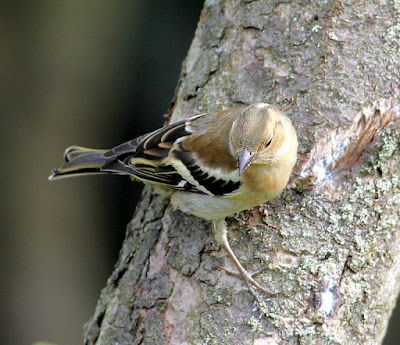It’s ages since a ringing session hit the fifty birds processed mark. When I met up with Will and Andy at the Sand Martin colony at 0700 this morning it didn’t seem likely that this day would be any different. Tuesday had seen downpours with inches of constant rain between midday and midnight but where weather forecasts still confirmed that Wednesday would be a “goer”.
Early cool and 100% cloud cover saw very few Sand Martins around; we really thought we might struggle into double figures given the lack of activity at the nest holes. As the morning warmed and the sun appeared, things began to look up with Sand Martins on the move, joining in with the activity around the nest holes and over the feeding area of the fishing lake.
By 1110 hours when we tallied up and packed in we had caught 50 new Sand Martins from an estimated count of 150-180 individuals. That would mean a catch of at least 33% of those birds seen, an unlikely ratio and therefore more likely that the number of martins around was actually above 200.
Sand Martin
Field Sheet. First Page.
The field sheet showed 12 new adults, an equal split of 6 males and 6 females, plus 38 juveniles. Interestingly, we had zero recaptures from earlier in 2023 or from previous years, another indication of post breeding dispersal from other sites.
Other activity saw a juvenile Kestrel trying its luck around the martin nest holes, an unsuccessful ploy that also failed for the adult Kestrel we caught here on 14 June.
When we arrived just before seven Will spotted a small flock of 15/20 Black-tailed Godwits flying some distance away, perhaps looking for rain soaked fields in which to feed.
About mid morning we realised that two of the godwits had landed a field away from our processing point. The two appeared to be of the Icelandic islandica race by way of their very strong brick-red colouration.
Black-tailed Godwit
Black-tailed Godwit
April produces the largest flocks of Black-tailed Godwits which correlates well with the bulk of breeders arriving in Iceland between mid April-mid May. The second half of May and early June is considered late for islandica to be in England and it is presumed that these birds are non breeders that may spend the summer here.
Other birds seen - 4 Common Tern, 1 Common Sandpiper, 6 Tree Sparrow, 2 Pied Wagtail.
A good morning was had by all. Come back soon for more news, views and photographs.
Linking on Saturday to Viewing Nature With Eileen.






























































.jpg)


















